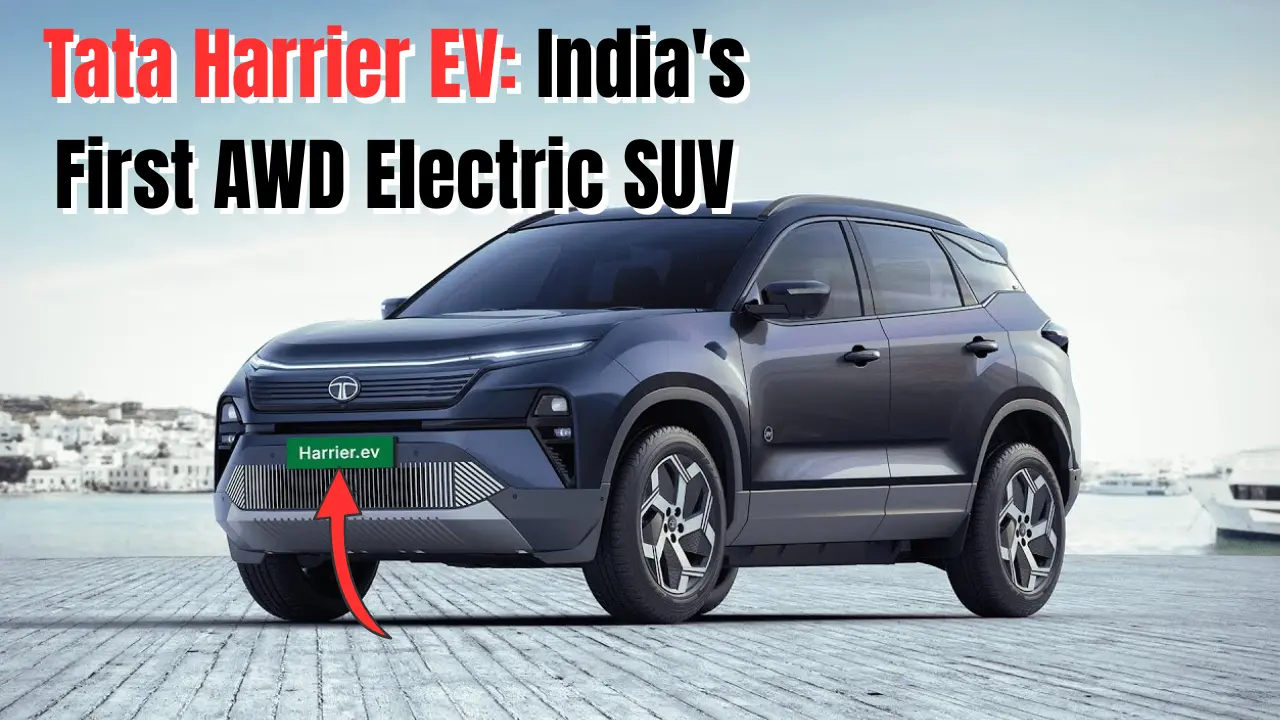Tata Harrier EV: Tata Motors is expected to reveal the long-awaited Harrier EV on June 3, indicating another big push in the electric SUV revolution in India. Tata’s popular Harrier in an electric avatar will be the automaker’s sixth EV offering and the one to bring some disruption to the high-end electric SUV category.
What’s New Under the Hood
The Tata Harrier EV uses the carmaker’s new ‘acti.ev+’ platform – which is more or less a heavily modified iteration of the OMEGA ARC architecture that forms the base of the standard Harrier. This is no mere battery-slapped-on approach, either; the platform has been tailored for electric propulsion, with a flat floor structure that offers the prospect of extra spacious cabin.
On the performance front, Tata has announced that the SUV will be pushing out 500 Nm of torque, which is pretty handsome for this category. The company is aiming for a real-world range of more than 500 kilometers on a single charge – a number, if it’s achieved, that would be smack dab in the middle of the sweet spot for the Indian market.
Noteworthy is the dual-motor all-wheel-drive configuration that will launch on latter models. This would effectively make the Harrier EV the first mainstream Tata model to benefit from AWD technology, which could give it an advantage over rivals in both performance and off-road prowess.
Read Also: 2025 Tata Punch Facelift Revealed: Major Interior Upgrade, Same Reliable Engine
Design: Familiar Yet Fresh
Don’t expect any dramatic styling changes. For the most part, the Harrier EV carries over its beefy, Land Rover-ish design from its ICE sibling, although there are a few nicely judged EV-specific details to be found. The sealed-off grille, restyled bumpers and more aerodynamically focused alloy wheels, are the most obvious giveaways.
Discreet ‘EV’ badges on the front doors and a ‘HARRIER.EV’ badge on the tailgate and you have the electric conversion done. Recent spy photos of production-ready models suggest this will be the same, with silver wheels wearing aero-patterns – a thoughtful detail that suggests that aerodynamic efficiency is given some consideration.
Inside: Tech-Forward Approach
On the inside it is heavily borrowed from the diesel version with list of features specifically designed for EV. The dual 12.3-inch screens configuration is intact, along with the JBL 10-speaker sound system, ventilated front seats and that panoramic sunroof.
What’s new is the Arcade.ev offering over-the-air updates, connected car technology and V2V and V2L charging. The latter is a potential game-changer that would enable owners to power up external devices and possibly even lend a hand to other EV owners in need.
Pricing and Competition
Yet, industry sources claim the price bracket could fall between ₹24-30 lakh (ex-showroom), making it stand against the likes of the Mahindra XEV 9e (₹21.90-30.50 lakh) and BYD Atto 3 (₹24.99-33.99 lakh). This is sensible pricing – high end enough that it validates the tech as well as features, but not so much that it would drive away potential buyers.
The timing is perfect. With the Hyundai Creta EV, Maruti eVitara and a bunch of other electric SUVs in the pipeline, the Harrier EV will compete in what is already looking like a very competitive space.
The Bigger Picture
The Harrier EV is not just some electric car for Tata Motors. It’s a statement of purpose in the luxury EV space, in which the company has been somewhat staid up to now. The wayside success of the Nexon EV and Punch EV has given Tata the confidence to introduce the Harrier EV, an SUV that will be the biggest test of all to find out if Indian car buyers are prepared to give larger and more expensive SUVs an electric shake.
The launch scheduled for June 3 will disclose the specifications, pricing and availability of this device. With Tata’s history with EVs and the Harrier’s already established fan base, this might just be the electric SUV to lure some fence-sitters over the electric camp.
Whether it lives up to the expectations or not, is a different story altogether, but on paper at least, the Harrier EV looks to have everything it needs to make a mark in India’s fast-changing EV canvas.
